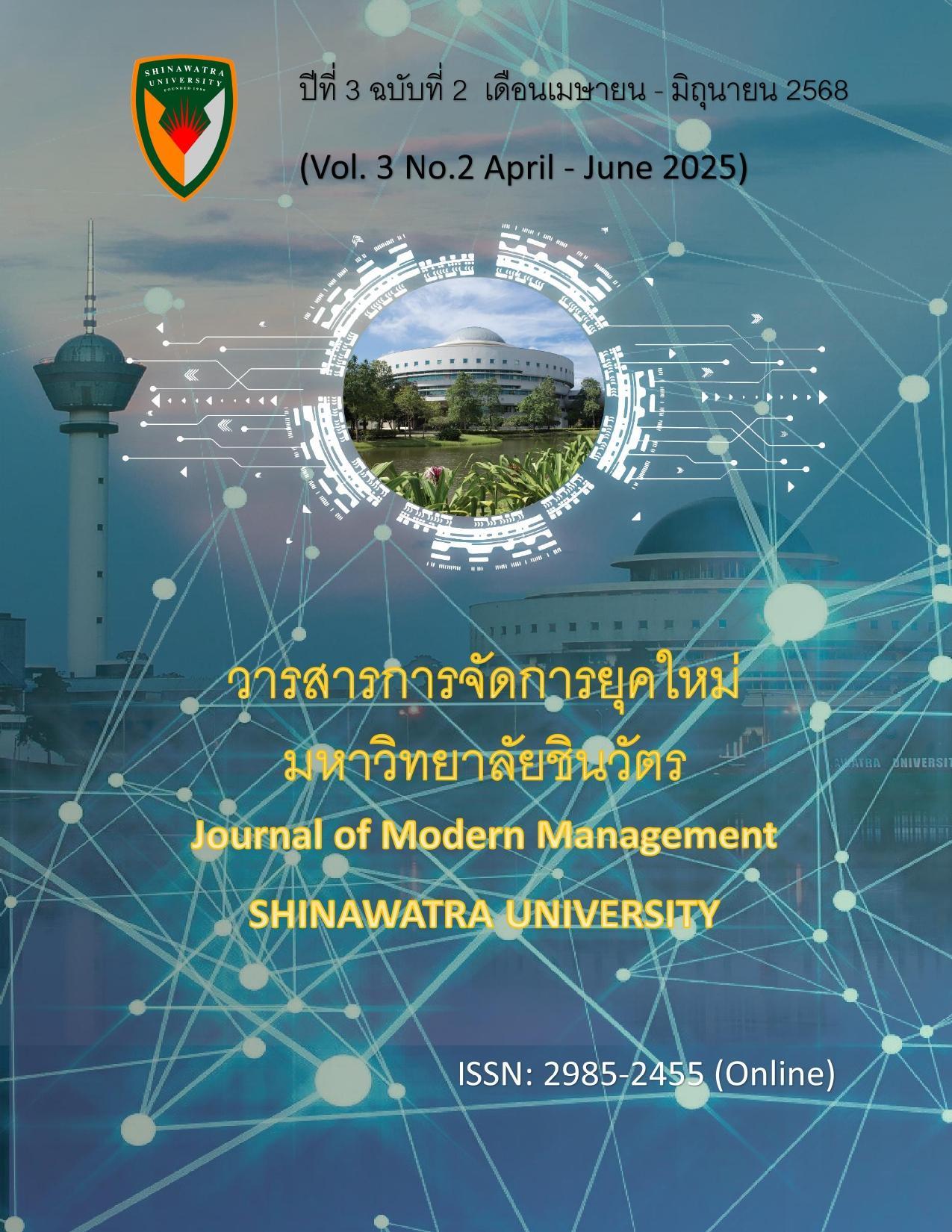A Survey of Students' Media Usage Behaviors that Promoting Digital Media Literacy
Keywords:
Media Literacy, Media Usage Behavior, Digital MediaAbstract
Digital media has become an integral part of daily life, media literacy has become an essential skill for children and youth. This research aims to study the media usage behavior of high school students and to assess their media literacy across five dimensions: access, analysis, evaluation, creation, and participation. A questionnaire was administered to a sample of 71 students, and data were analyzed using descriptive statistics and one-way ANOVA.
The study found that most students use social media for more than five hours per day, with 55 students (77.5% of the sample) reporting this usage pattern. Among them, Mathayom 4 students had the highest proportion, with 20 students (83.3%) spending the most time on social media. Most students use digital media primarily for entertainment purposes, with Instagram and TikTok being the most popular platforms. Overall, students’ media literacy levels were at a moderate level, with access skills scoring the highest and creation skills the lowest. This research highlights the importance of developing educational media and activities that promote media literacy among students.
References
วิชัย วงษ์ใหญ่ และ มารุต พัฒผล. (2564). การพัฒนาความคิดสร้างสรรค์ของผู้เรียน. ศูนย์ผู้นำนวัตกรรมหลักสูตรและการเรียนรู้, บัณฑิตวิทยาลัย มหาวิทยาลัยศรีนครินทรวิโรฒ. https://www.curriculumandlearning.com/upload/Books/Develop%20Creativity_1615683966.pdf
หนังสือรู้เท่าทันสื่อ. (2560). ศูนย์เรียนรู้สุขภาวะ สำนักงานกองทุนสนับสนุนการสร้างเสริมสุขภาพ. https://www.thaihealth.or.th/5-องค์ประกอบของการรู้เท-2/
Ahmad Syakir Salman Salleh @ Abdul Latif, D., Latiff, D. I. A., Zambri, W. A. A. M., Abu Bakar, M. N., Abd Razak, M., & Kamal, S. (2024). Youth and media literacy: Understanding social media's influence on information consumption. International Journal of Academic Research in Business and Social Sciences, 14(6). https://doi.org/10.6007/IJARBSS/v14-i6/21747
Anderson, M., Faverio, M., & Gottfried, J. (2023). Teens, social media and technology 2023. Pew Research Center. https://www.pewresearch.org/internet/2023/12/11/teens-social-media-and-technology-2023/
Barbara Ortutay. (2017, April 28). AP-NORC poll: Most teens have taken social media break. AP News. https://apnews.com/general-news-daec4139f45645db9468bf2e6c69dac7
Kirsten Eddy. (2022, June 15). Young audiences and the news media. Reuters Institute for the Study of Journalism. https://reutersinstitute.politics.ox.ac.uk/digital-news-report/2022/young-audiences-news-media
Kolhar, M., Kazi, R. N. A., & Alameen, A. (2021). Effect of social media use on learning, social interactions, and sleep duration among university students. ScienceProgress, 104(1), 1-9. https://doi.org/10.1016/j.sjbs.2021.01.010
Thoman, E., & Jolls, T. (2003). Literacy for the 21st Century: An Overview & Orientation Guide to Media Literacy Education. Santa Monica, CA: Center for Media Literacy. https://www.medialit.org/sites/default/files/01_MLKorientation.pdf
We Are Social & Meltwater. (2024). Digital 2024: Thailand. Retrieved from https://datareportal.com/reports/digital-2024-thailand
Yu, A.Y. et al., 2010. Can learning be virtually boosted? An investigation of online social networking impacts. Comput. Educ. 55 (4), 1494–1503. https://doi.org/10.1016/j.compedu.2010.06.015Get rights and content
Downloads
Published
Issue
Section
License
Copyright (c) 2025 Journal of Modern Management SHINAWATRA UNIVERSITY

This work is licensed under a Creative Commons Attribution-NonCommercial-NoDerivatives 4.0 International License.





